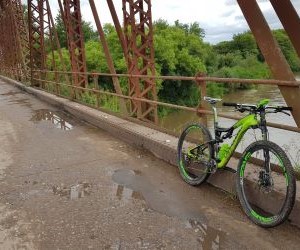Discover the most important cycling safety accessories every rider should have, from helmets to visibility gear, for safer and more confident rides.
WHAT ARE THE MOST IMPORTANT CYCLING STRETCHES FOR INJURY PREVENTION?
Cycling is a repetitive-motion sport that places heavy demand on specific muscle groups. While it builds endurance and strength, the forward-leaning posture and constant pedaling can also cause tightness, imbalances, and overuse injuries. Stretching plays a critical role in offsetting these risks by restoring flexibility, improving circulation, and maintaining joint health. This article explores the most important cycling stretches for injury prevention, highlighting how each targets common problem areas such as hips, hamstrings, quads, and lower back. With the right stretching routine, cyclists can ride longer, recover faster, and reduce the likelihood of chronic pain.

Hip and glute stretches
Tight hips and glutes are among the most common issues faced by cyclists. Hours spent in a forward-flexed position shorten hip flexors while overworking glutes, leading to discomfort and potential imbalances. Stretching these areas restores mobility and prevents strain on the lower back and knees.
Seated figure-four stretch
Sit on a chair with your right ankle resting on your left knee. Lean forward gently until you feel a stretch in your right glute. Hold for 30 seconds, then switch sides. This stretch releases glute tension and alleviates pressure on the sciatic nerve.
Lunge hip flexor stretch
Step one leg forward into a lunge, keeping the back knee on the floor. Push your hips forward while keeping your chest upright. Hold for 30 seconds. This targets tight hip flexors, a key area affected by cycling posture.
Why hip and glute flexibility matters
Reduces pressure on lower back by restoring pelvic alignment.
Improves pedaling efficiency by allowing fuller hip extension.
Prevents knee pain linked to tight hip flexors and IT band tension.
Regularly stretching hips and glutes is essential for maintaining balance between power generation and joint protection during rides.
Hamstring and quadriceps stretches
Hamstrings and quads bear the brunt of cycling’s repetitive pedaling motion. Tightness in these muscles can limit flexibility, reduce power, and increase the risk of strains or tendon issues. Post-ride stretches are critical for keeping them supple and resilient.
Standing hamstring stretch
Stand with one foot slightly forward and heel resting on the ground. Keep your leg straight and hinge at the hips to reach toward your toes. Hold for 20–30 seconds per side. This elongates hamstrings while protecting lower back alignment.
Quad stretch
Stand on one leg, holding the opposite ankle behind you. Pull the heel toward your glutes while keeping knees close together. Hold for 20–30 seconds per side. This counteracts the constant contraction quads endure during rides.
Why leg stretches prevent injuries
Promote balanced flexibility between hamstrings and quads.
Reduce strain on knee joints, a common cycling pain point.
Support efficient pedal stroke mechanics and recovery.
Keeping hamstrings and quads flexible not only prevents injuries but also improves power transfer, making every pedal stroke smoother and more effective.
Lower back and calf stretches
Cyclists often experience stiffness in the lower back and calves due to posture and repetitive strain. Without proper stretching, these areas can trigger discomfort that radiates into hips, hamstrings, or even Achilles tendons. Maintaining mobility here is vital for injury prevention and comfort on long rides.
Child’s pose for lower back
Kneel on the floor, sitting back on your heels, and extend your arms forward on the ground. Hold for 30 seconds while breathing deeply. This stretch decompresses the spine and alleviates tension from prolonged cycling posture.
Downward-facing dog for calves
From a plank position, push your hips upward into an inverted V-shape. Keep heels pressing toward the floor for a deep calf stretch. Hold for 30 seconds. This relieves tight calves and promotes ankle flexibility essential for smooth pedaling.
Why stretching back and calves matters
Relieves spinal tension caused by forward-leaning posture.
Prevents Achilles tendonitis and calf strains from overuse.
Improves circulation and reduces post-ride soreness.
By focusing on lower back and calf flexibility, cyclists build resilience against two of the most common sources of chronic pain, keeping rides comfortable and sustainable.
YOU MAY ALSO BE INTERESTED






